Privacy Policy | Terms and Conditions | Disclosure Statement | License Policy
COPYRIGHT © 2024 | NUMBER 8 COOKING | ALL RIGHTS RESERVED.

Privacy Policy | Terms and Conditions | Disclosure Statement | License Policy
COPYRIGHT © 2024 | NUMBER 8 COOKING | ALL RIGHTS RESERVED.

Privacy Policy | Terms and Conditions | Disclosure Statement | License Policy
COPYRIGHT © 2024 | NUMBER 8 COOKING | ALL RIGHTS RESERVED.
Yorkshire pudding mistakes. There are common pitfalls that even experienced cooks can encounter. This golden-brown, airy, and slightly crispy side dish complements any roast dinner. However, achieving the perfect Yorkshire pudding can be a bit tricky for even seasoned cooks.
This is such a simple recipe — only three ingredients eggs, milk, and flour. However, so many things can go wrong. The most important thing is getting the Yorkshire pudding recipe right. The rest will fall into place.
You’ve just cooked a batch of Yorkshire puddings to accompany your corned silverside. They’re not right, and you’re wondering where you went wrong. Well, fear not; as a professional chef, I’m here to guide you through those mistakes and provide failproof solutions.
ADVERTISEMENT CONTENT BELOW
You may have made Yorkshire pudding mistakes. Flat and dense puddings, puddings stuck to the muffin tin, or puddings cooked unevenly — I’ve all made one of those mistakes in the past. I’ve made so many Yorkshire puddings that I’ve mastered the fine art. Flawless Yorkshire puddings are what you’ll be making in no time.
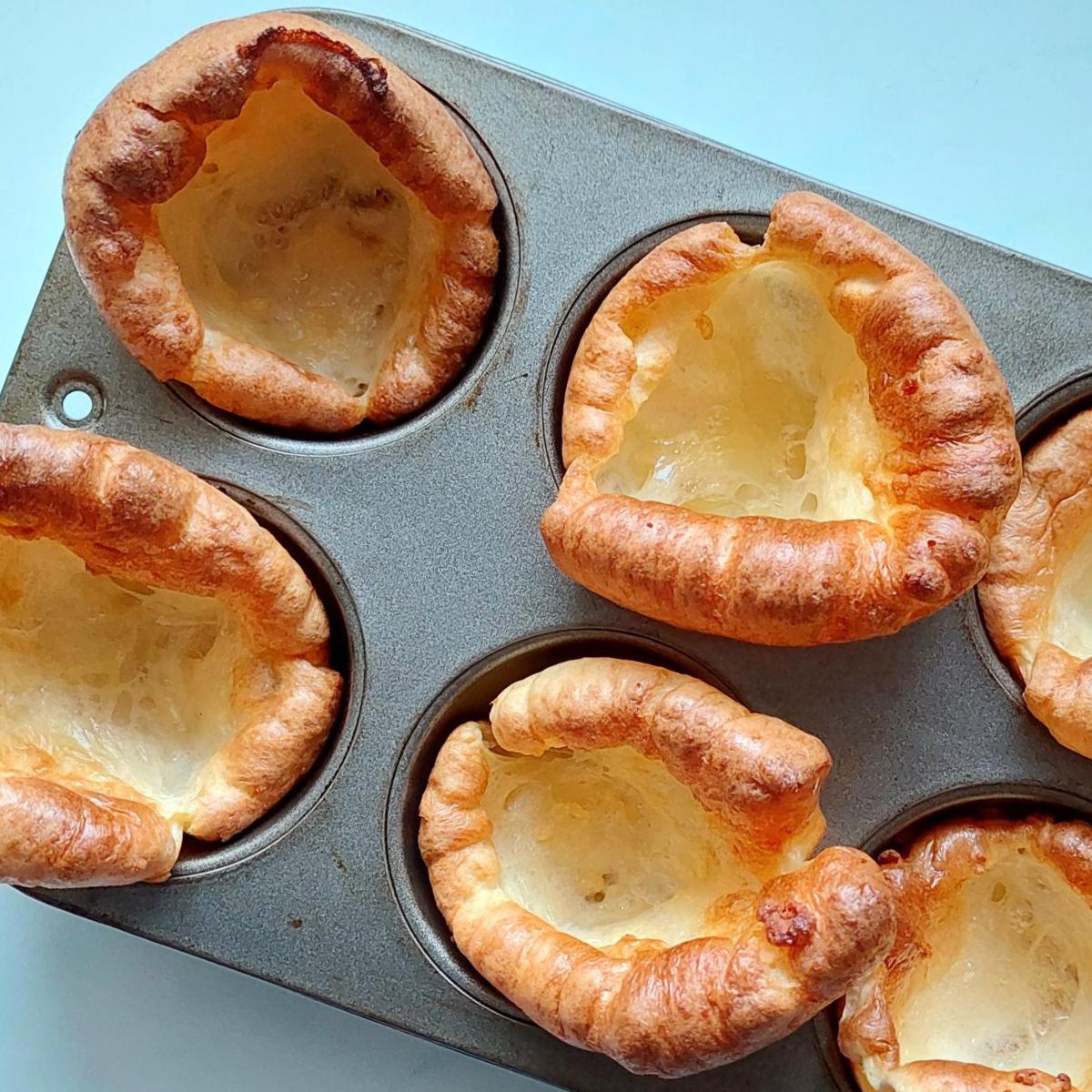
ADVERTISEMENT CONTENT BELOW
The Yorkshire pudding mistakes I’ve made in the past have helped me perfect my recipe. I’ve encountered some common mistakes, and I’m sharing the solutions I’ve discovered with you. Remember, it is all about the ingredient quantities, technique, oil heat, oven temperature, and cooking time. One of these is slightly off, and mistakes will happen.
One of the most common Yorkshire pudding mistakes is the incorrect measurement of the eggs, milk, or flour. This is the number one mistake. If you don’t get the recipe right, the pudding will never rise or cook properly.
ADVERTISEMENT CONTENT BELOW
Yorkshire Pudding Mistakes. Your puddings have come out flat and dense, like hockey pucks.
There are a couple of things that could be wrong.
Chefs Pro Tip — Use a cooking medium with a high smoke point. Fat dripping, rice bran, sunflower, or corn oil are the best options.
Yorkshire Pudding Mistakes. When you try to remove your Yorkshire puddings from the muffin tin, they stick, and the only way to get them out is to rip them. They should easily slide out of the cups.
ADVERTISEMENT CONTENT BELOW
Yorkshire Pudding Mistakes. Your puddings, when cooked, come out uneven. Some have risen, others not so much, and others not at all.
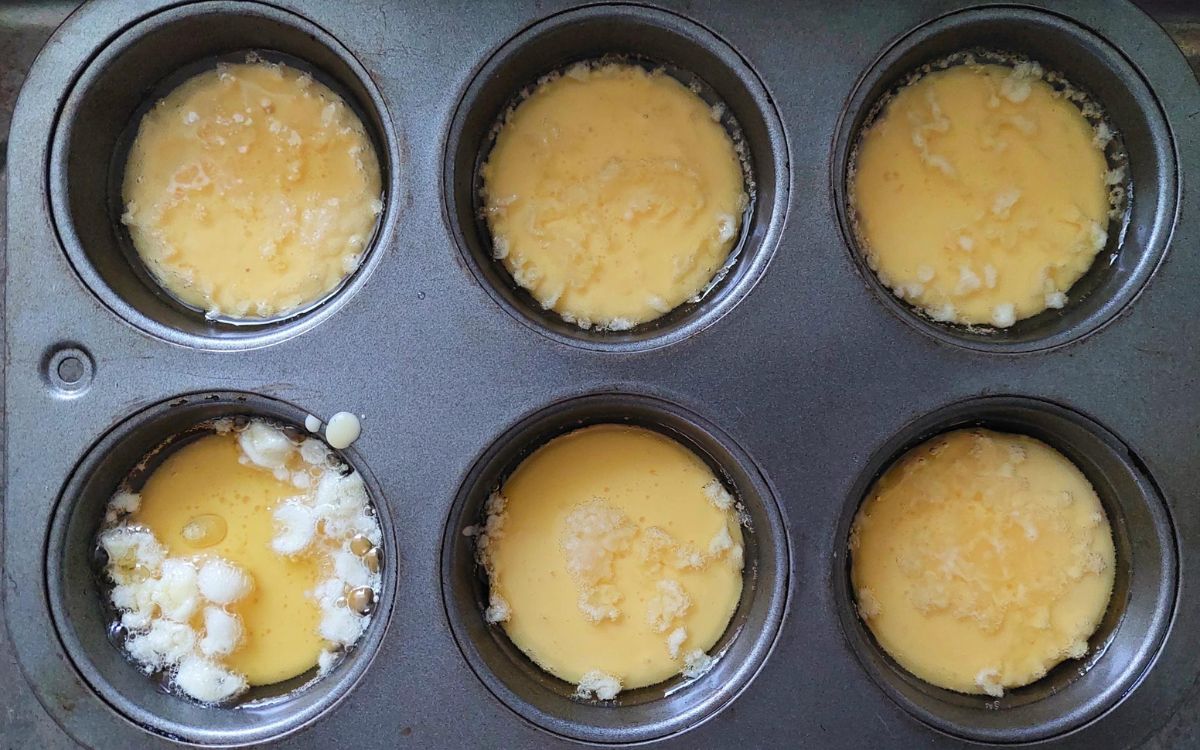
ADVERTISEMENT CONTENT BELOW
Yorkshire Pudding Mistakes. Overcrowding your oven can result in unevenly cooked Yorkshire puddings. They cook at different times. Resulting in you having to open the oven to remove the cooked ones. Losing precious heat.
Yorkshire Pudding Mistakes. Excess fat can overflow into the Yorkshire pudding center, making the puddings greasy. The hot fat or oil can also overflow from the muffin cups, dripping into the bottom of the oven. This will cause the base of the oven to smoke.
ADVERTISEMENT CONTENT BELOW
Chef’s Pro Tip — Place the muffin tins on a baking tray. So, if the oil or fat spills out from the muffin tin it will be contained in the baking tray.
Yorkshire Pudding Mistakes. When you’ve cooked your puddings, they resemble a colorless blini. Soft and flat.
ADVERTISEMENT CONTENT BELOW
Yorkshire Pudding Mistakes. Your Puddings are looking fantastic. You open the oven door to remove them. They instantly collapse and become flat and lifeless.
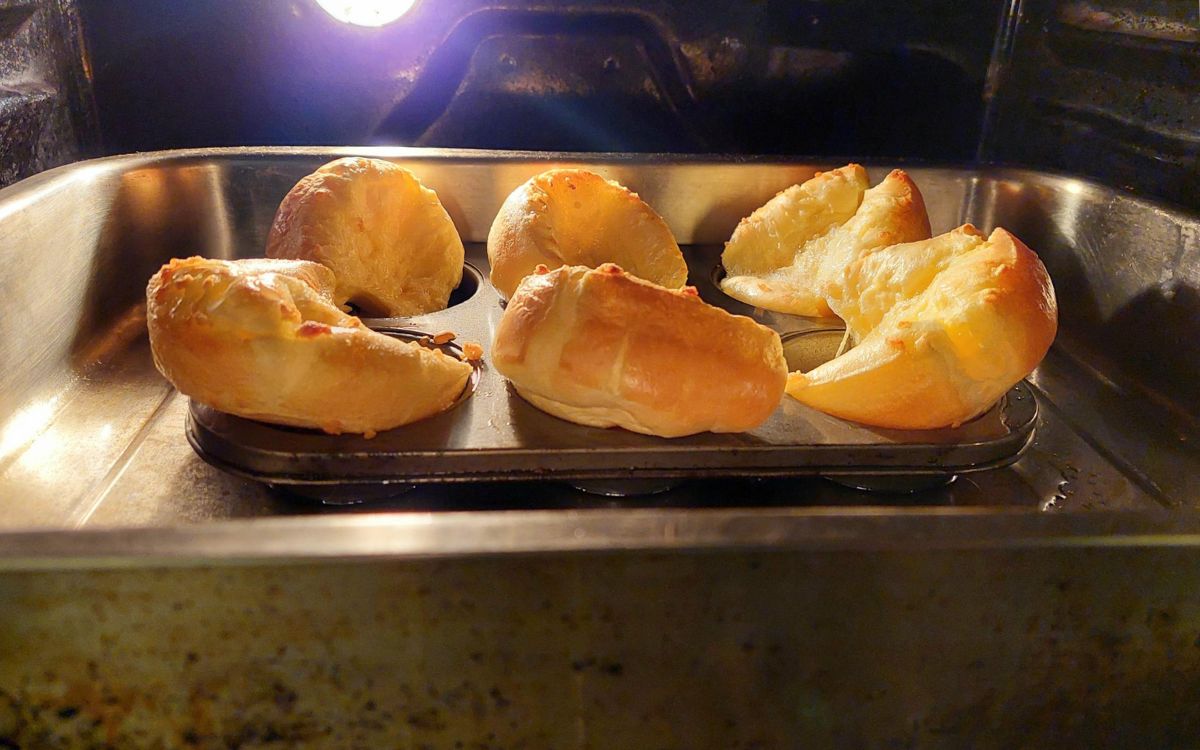
Yorkshire pudding mistakes. Turning the oven on and hoping for the best won’t work. You’ll need to preheat the oven and follow the temperature recommendations outlined below.
ADVERTISEMENT CONTENT BELOW
Overmixing the batter is one of the common Yorkshire pudding mistakes. I made this mistake when I first started cooking Yorkshire puddings. Overmixing will overwork the gluten in the flour, leading to tough puddings that will not rise very well, if at all.
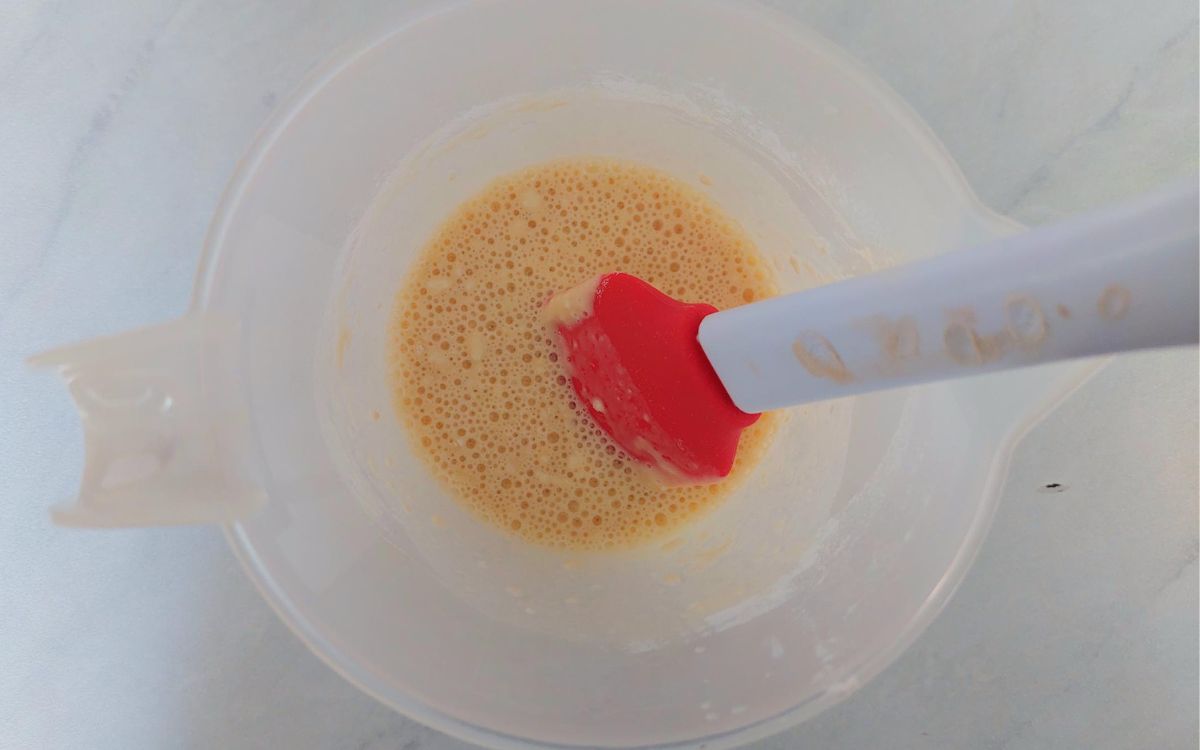
ADVERTISEMENT CONTENT BELOW
Yorkshire pudding mistakes. Opening the oven door to take a peek. Seeing how your puddings are going is a bad idea. Sudden temperature drops can cause puddings to deflate and become lifeless.
Yorkshire pudding mistakes. Resting the batter is a key step in the preparation. This resting period relaxes the gluten in the flour and helps the puddings rise. It also adds flavor, just like when making bread.
ADVERTISEMENT CONTENT BELOW
Yorkshire pudding mistakes. Your Yorkshire puddings have a burnt, greasy flavor. However, they don’t look burnt.
Chefs Pro Tip — I’m opting for rice bran oil with a high smoke point. Which means it can endure high temperatures without burning. Avoid using olive oil or butter, as they will burn.
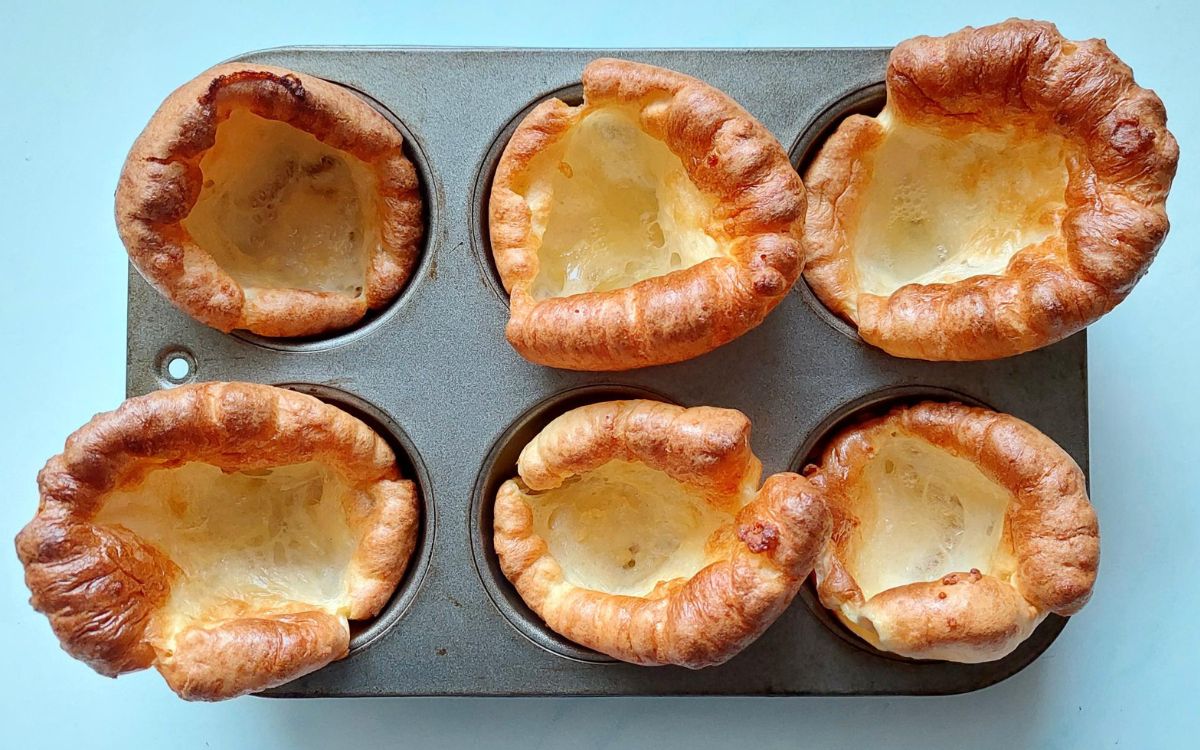
This easy Yorkshire pudding recipe is great with your Sunday roast — roast beef ribeye and meat gravy. It’s the kind of food that takes me back to my childhood.
There are so many Yorkshire pudding recipes out there. However, this recipe will yield excellent results every time. Enjoy your triumph of overcoming your Yorkshire pudding mistakes.
There are a few reasons why your Yorkies might not have risen. Here are some common Yorkshire pudding mistakes to avoid.
1. Not using hot enough oil. The oil should be smoking hot when you add the batter.
2. Not letting the batter rest. Resting the batter for at least 1 hour allows the gluten to relax and the air bubbles to develop.
3. Overmixing the batter will develop the gluten and make the puddings tough.
4. You are not using the right pan or muffin tin. Yorkshire puddings need to be cooked in a well-greased metal pan.
5. Not putting the muffin tin in the oven soon enough. The pan should be placed in the oven as soon as the batter is added.
You can do a few things to make sure your Yorkshire puddings are crispy and have a great texture.
Use an oil with a high smoke point. Avocado, sunflower, rice bran, corn oil, or beef dripping will yield the best results. Remember to heat the oil until it is smoking hot.
Don’t overcrowd the oven. Too many Yorkshire puddings in the oven will prevent them from rising and crisping up properly.
Cook the puddings for the total amount of time. Don’t take them out of the oven too early or open the oven while cooking. They will be soft and doughy.
Yorkshire puddings are best eaten fresh. However, they can be stored at room temperature for up to 2 days in an airtight container. To reheat, simply place the puddings in a preheated oven at 150°C (300°F) for 3-5 minutes. Or they can be eaten as they are.
There are several reasons why Yorkshire puddings might stick to the tin. Here are some common issues and tips to prevent sticking:
Insufficient Oil Or Fat — Ensure you have enough oil or fat in the muffin tin cups. A good rule is to add a tablespoon of fat or oil to each cup or enough oil to cover the bottom of each muffin cup.
Inadequate Preheating — Ensure the tin is correctly preheated before pouring the batter. A hot tin helps create a crisp outer layer, reducing the chances of sticking. The oil or fat should be smoking before you add the batter. You should hear a crackling sizzle when the batter hits the hot oil.
Batter Temperature — Your Yorkshire puddings may stick if the batter is too cold when poured into the hot muffin cups. Make sure your batter is at room temperature.
Old Or Damaged Tin — Check the condition of your tin. If it’s old, scratched, or damaged, it might be more prone to sticking. Consider investing in a new, non-stick muffin tin.
Use Of Non-Stick Spray — Avoid using a non-stick oil spray. The oil in these sprays doesn’t have a high smoke point, so it will burn, affecting the release of the Yorkshire puddings.
Cooling Time — Allow the Yorkshire puddings to cool slightly in the tin before attempting to remove them. 1-2 minutes of rest time is sufficient. This can make it easier to release them without sticking.
By addressing these factors, you should improve your chances of making perfect Yorkshire puddings without sticking to the muffin cups or tin.
Cooking is a science and a skill that requires a deep understanding of both the technical and creative aspects. Cooking is also a matter of precise measurements and ratios.
For example, baking is particularly sensitive to accurate measurements and temperatures. A slight deviation in the amount of an ingredient or cooking degrees can result in a completely different outcome. So, to help you here is a handy little unit converter tool for cooking without guesswork.